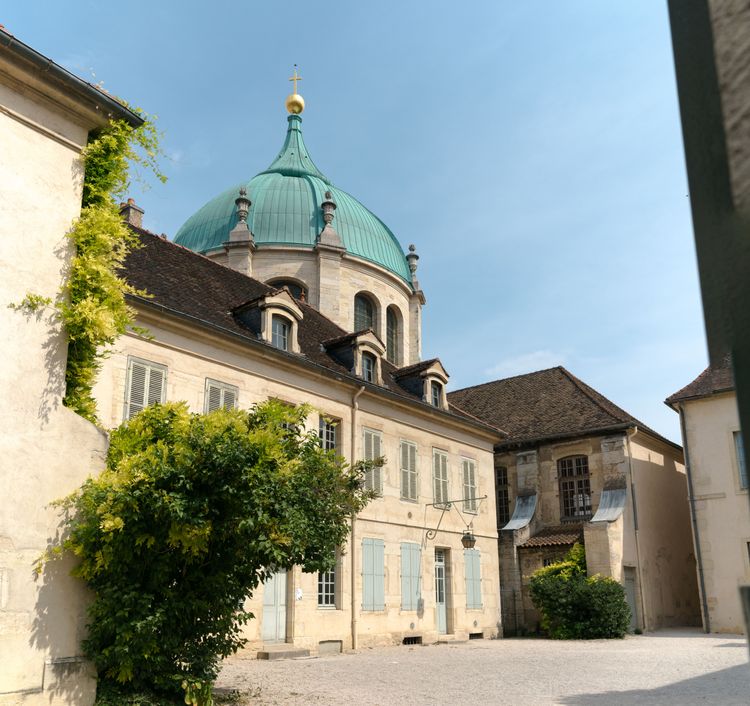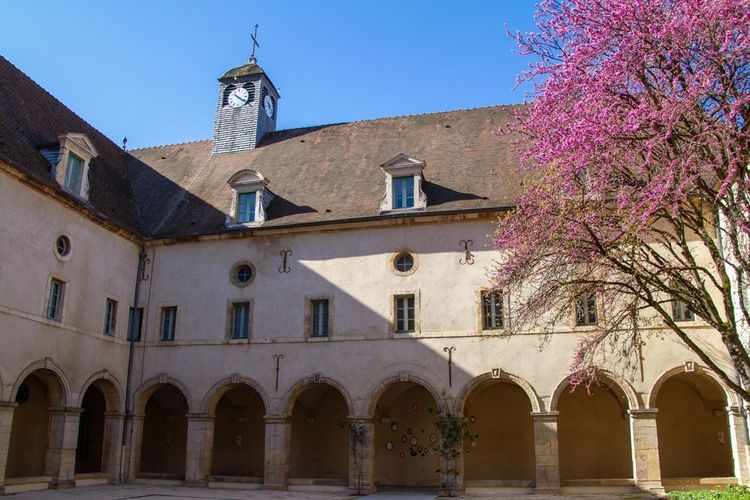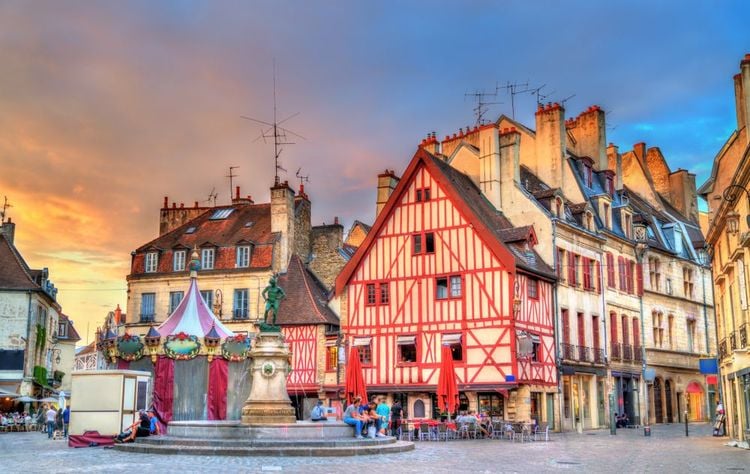The Musée de la Vie bourguignonne is located in the city of Dijon, just a stone's throw from Notre-Dame church. It is a museum of Burgundian ethnology, most of whose collections were assembled by Maurice Bonnefond Perrin de Puycousin. This great collector was first curator of the Tournus museum, before setting about creating the Musée de la Vie Bourguignonne in 1938.
The Musée de la vie bourguignonne came into being thanks to the passion of a man named Maurice Bonnefond Perrin de Puycousin. Initially a curator, this man eventually developed a particular interest in life around Dijon during the 17th and 18th centuries. Today, numerous collections can be seen in this museum, including everyday objects from this period, traditional costumes and headdresses, earthenware... What's more, the Musée de la Vie bourguignonne is housed in a former convent, the Bernardines monastery. You'll be able to enjoy a complete change of scenery, between old buildings and antique objects, during your stay in Dijon. Whether you're a couple, a family or a group of friends, the Musée de la Vie bourguignonne is waiting to welcome you.

The history of the Musée de la vie bourguignonne
If you're interested in finding out more about Dijon's businesses, this is the place to do it. Between 1886 and 1991, Dijon's commercial life was booming. It was during this period that Halle Ballard was built, and new regulations were introduced. These involved placing all stalls indoors, in specially adapted shops, so that the streets could be kept clear. Hairdressers, chemists, grocers, butchers and other businesses littered the streets. Some relics, such as advertising posters from the period, can be seen in the Musée de la vie bourguignonne.
Let's not forget that Dijon has also been marked by the passage of industry. Industry was particularly active in 1875, and the importance of this period is still evident today in the museum's collections.
The museum's location
Since 1985, the Musée de la Vie Bourguignonne has been housed on the site of the Bernardines monastery. So you can enjoy not only the collections, but also the architecture of this 17th-century building.

The Hundred Years' War particularly affected the Cistercian monastic communities, which were disorganised and reduced in size after this event. In response to these new problems, the Counter-Reformation was born to oppose the Protestant Reformation. From then on, women played a more important role in these communities. One of the most famous was Jeanne de Courcelles de Pourlans, who joined the first female abbey of the Cistercian order. Jeanne de Pourlans arrived in Dijon in 1623 and moved into a house with a garden in 1624. Over time, the building expanded, eventually reaching the city walls of Dijon in 1679, when work began on the cloister.
The museum's collections
The Musée de la vie bourguignonne boasts a wide range of collections, not all of which relate to the industrial period.
House near the town centre
1.5 km from Saint-Philibert church and 3.1 km from the Dijon Congrexpo exhibition centreFirst of all, you can admire the women's regional costumes, often worn on festive days. Lace, braids, silk dresses and other items are all on display, with each costume having its own explanation. The headdresses are also on show, demonstrating the unparalleled dexterity and refinement of the lacemakers and seamstresses. At the time, it was necessary to conceal part of the hair under these headdresses, which differed from region to region. Here is a retrospective of Dijon's traditional dress and headdresses through the ages.

Bernardines monastery, exterior view, Dijon, Burgundy-Franche-Comté, France.
- © Borisb17 / ShutterstockAnother collection is devoted to everyday objects, collected between 1880 and 1930. Here, life in the countryside is evoked, the lives of schoolchildren in the 19th and 20th centuries are recounted, and illustrations of weddings from the period are revealed. But when we talk about everyday objects, we also talk about food and domestic life. Food preservation, meal preparation, kitchen utensils, rack and pinion, jars and many other objects are on display.
Finally, you can also enjoy two dioramas, or large paintings, perfectly illustrating the interior of a house during those years.
Earthenware is also a Dijon staple, and has become firmly rooted in the town over the decades. Many great names have passed through these walls, while the grand feu technique has never ceased to make a name for itself. The ceramics are covered in all kinds of decorations, and Dijon's production was destined for private customers. What's interesting is that the decorations on this earthenware remained unchanged between the 17th and 18th centuries.
If you'd like to take a closer look at this typical Dijon production, you can take advantage of this complete collection, with ceramics in very good condition.
🍴 Where to eat?
Just a few streets away, the Piano qui Fume is a traditional restaurant offering a range of menus based on fresh, local produce, all homemade. The restaurant also boasts an extensive wine list.






